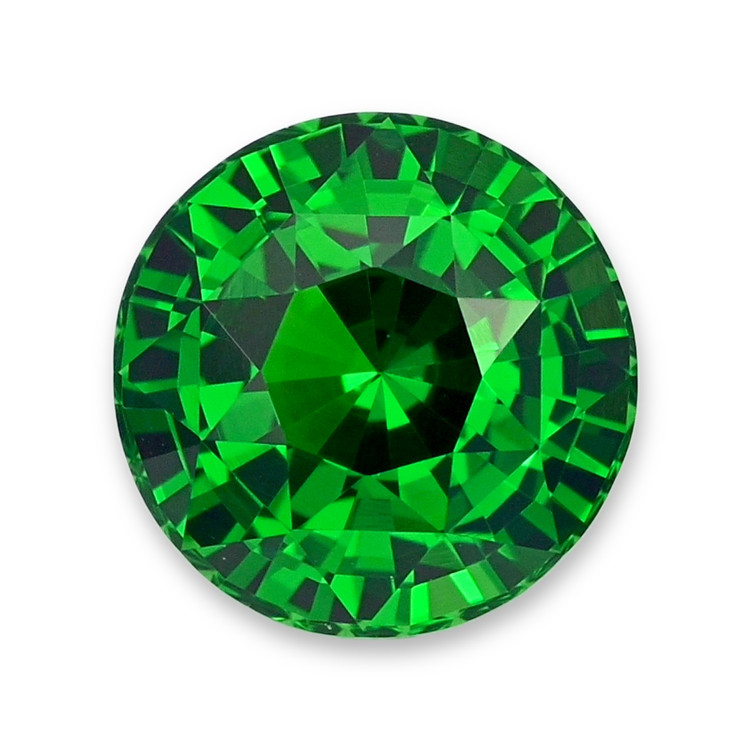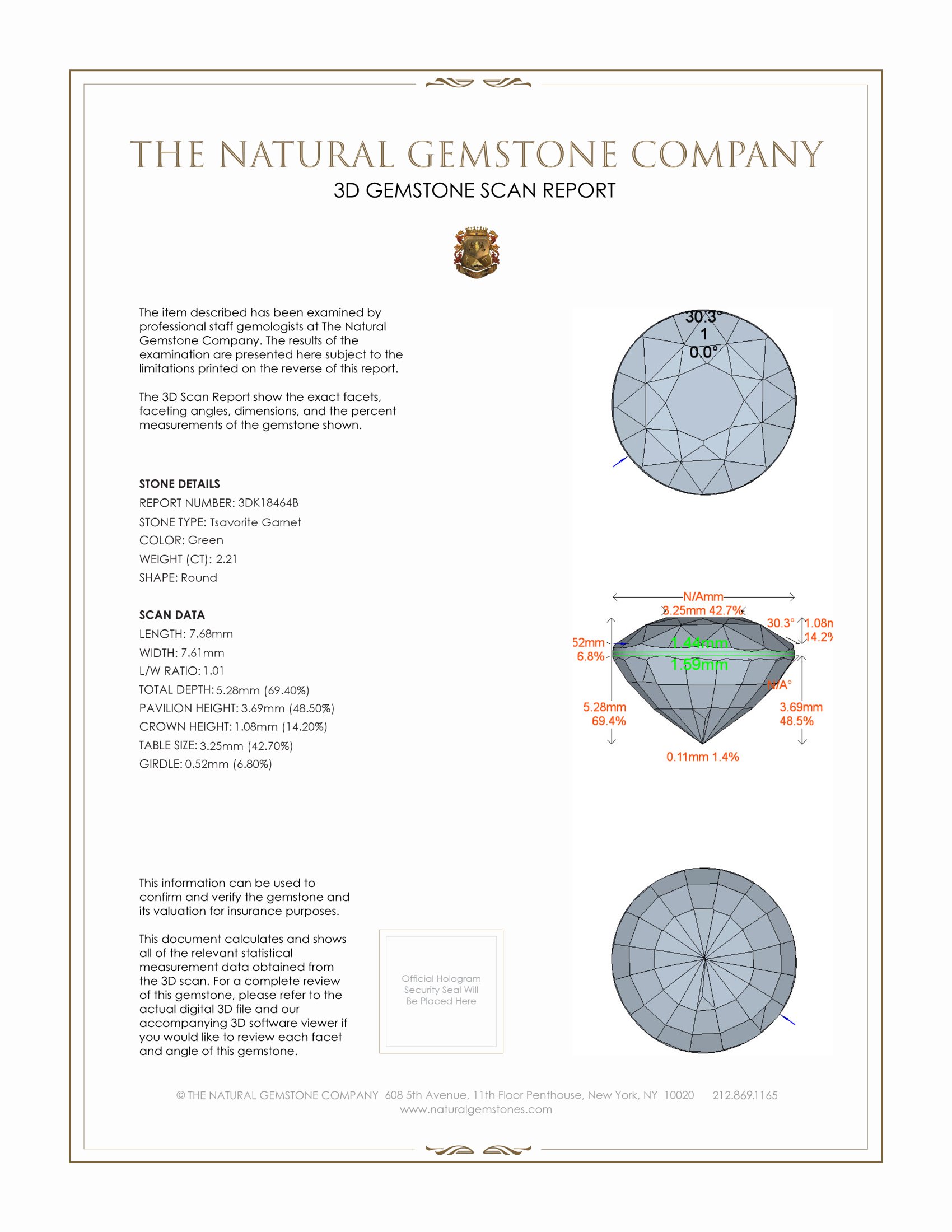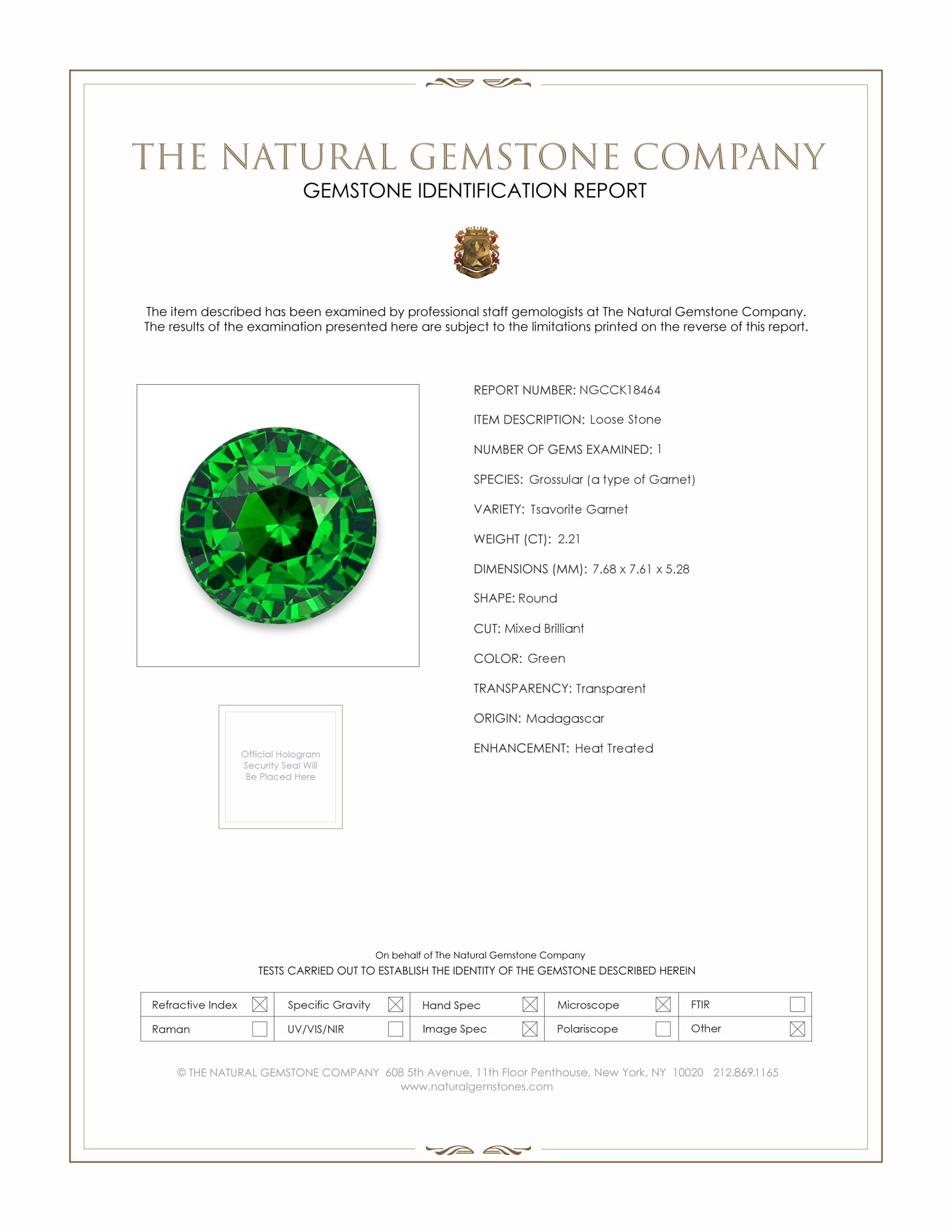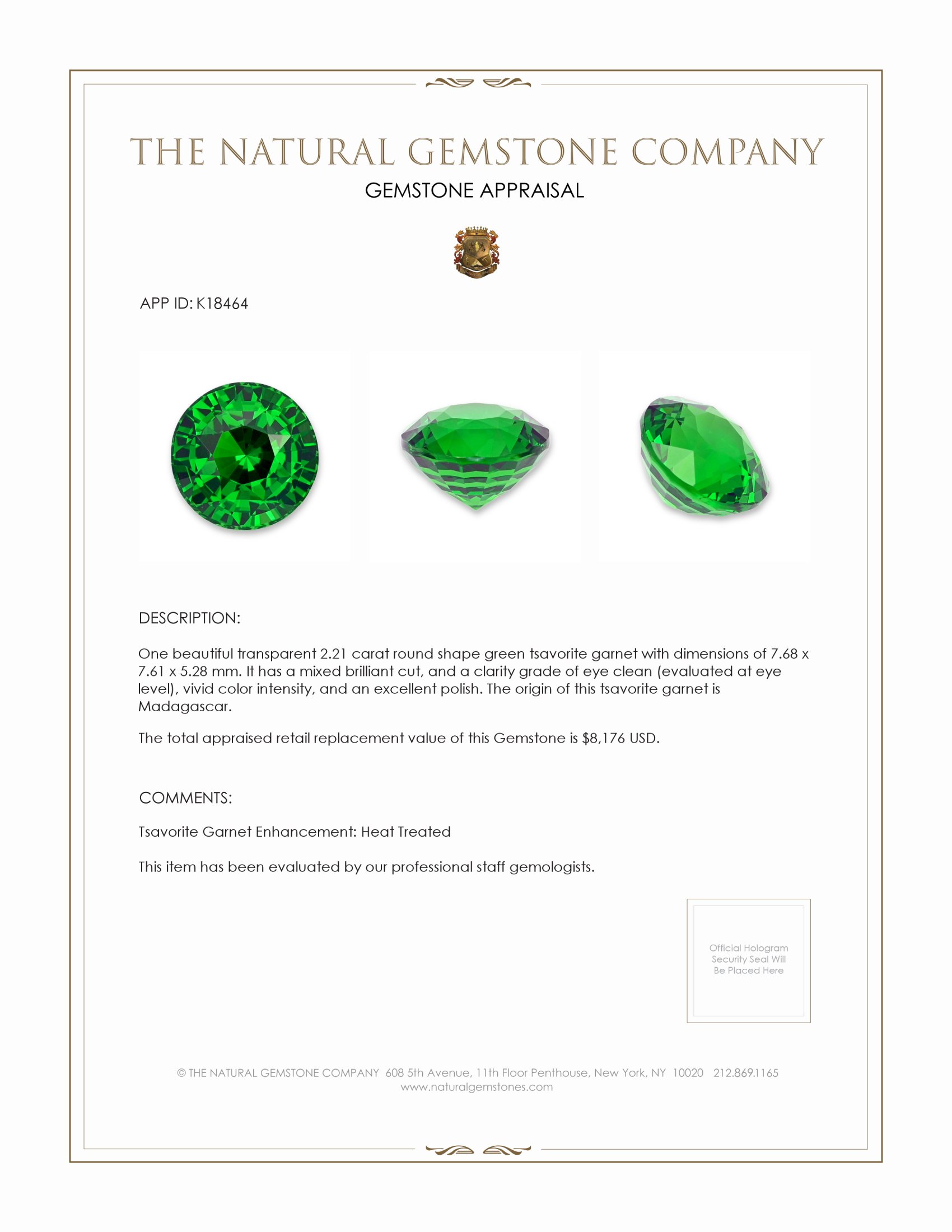- Stone11
- Reports3
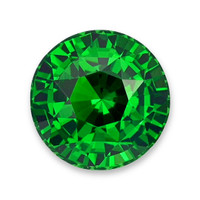

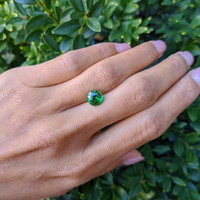
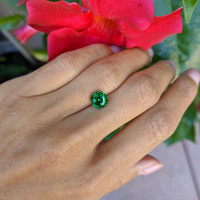
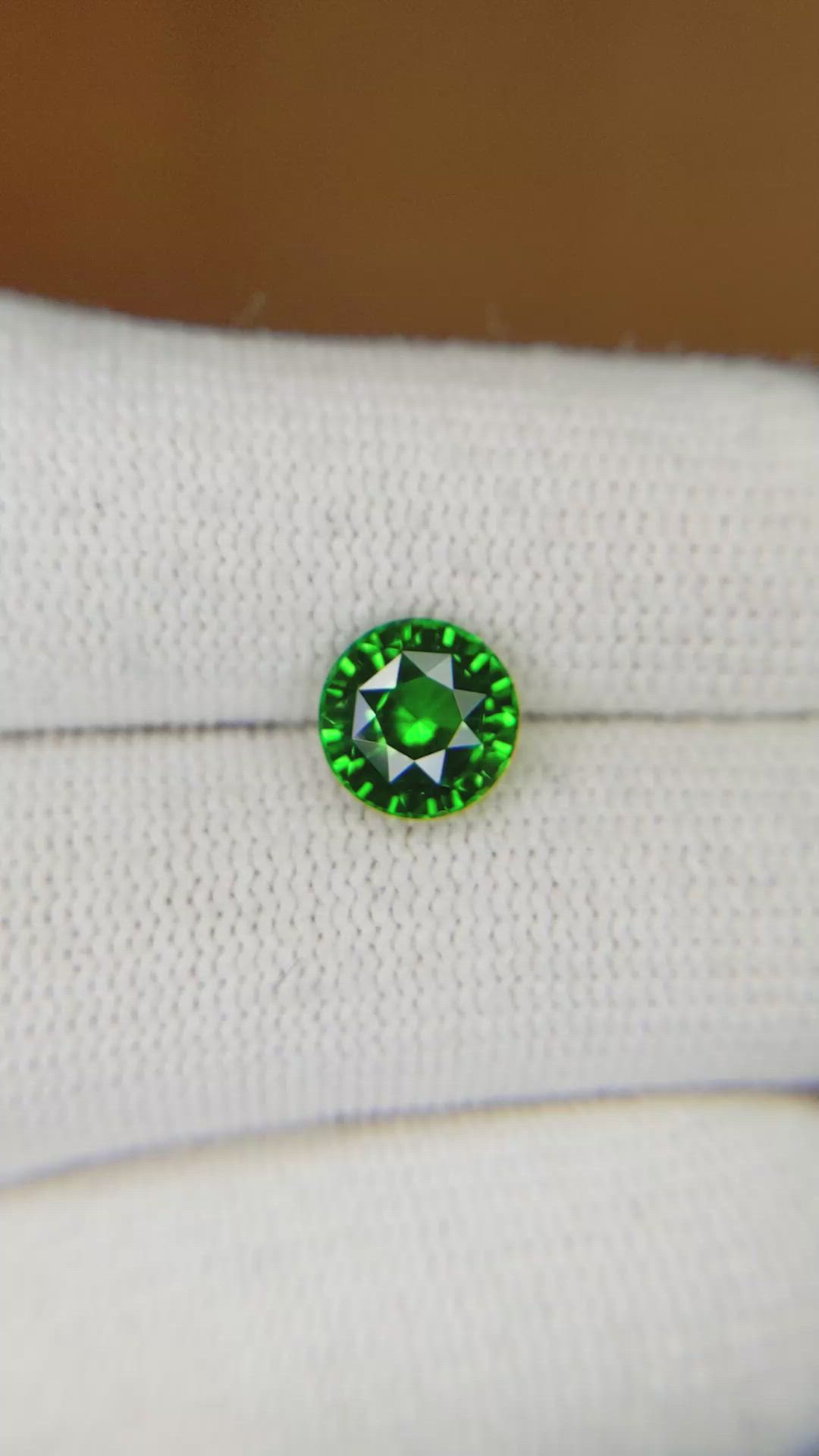
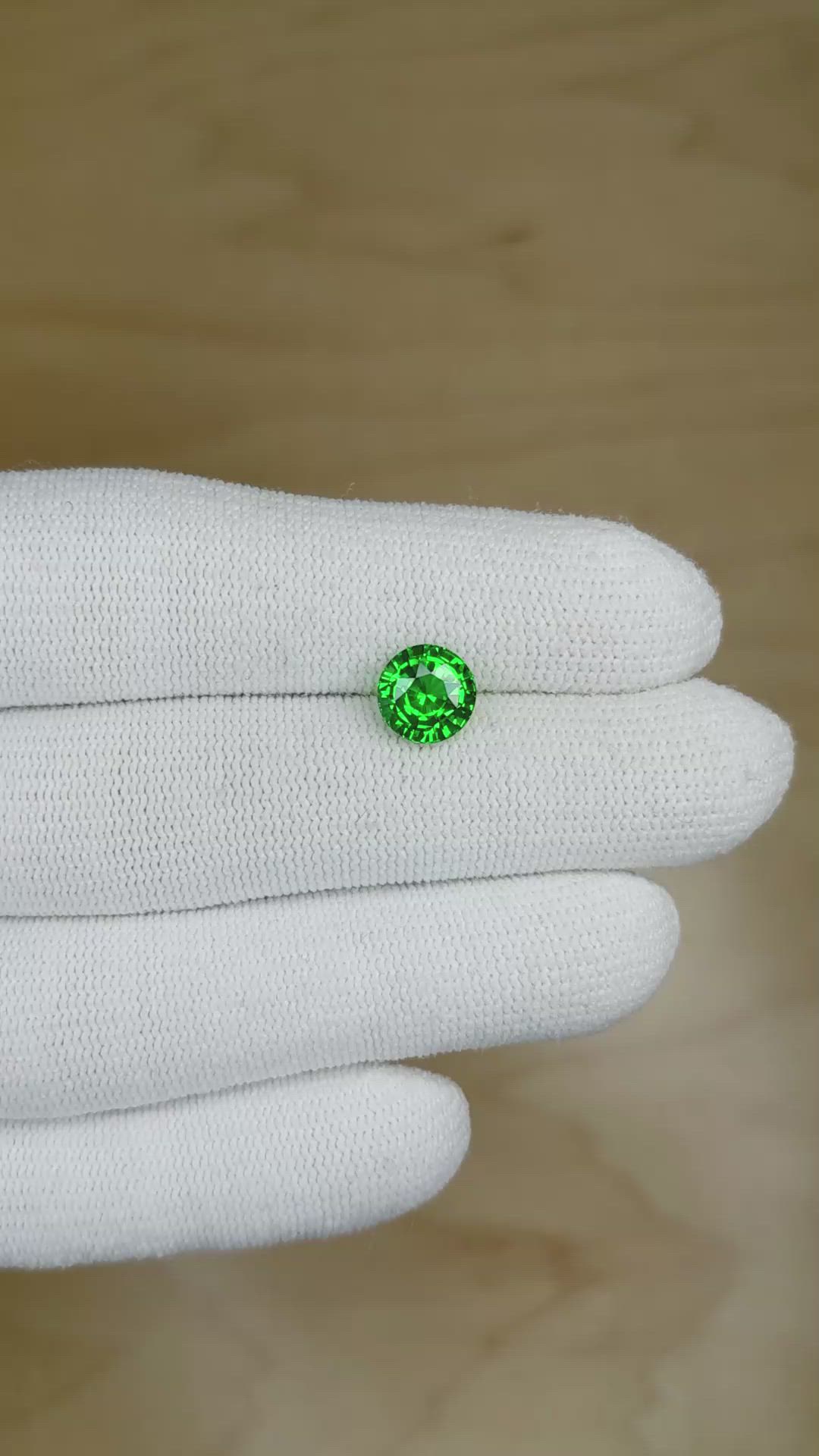
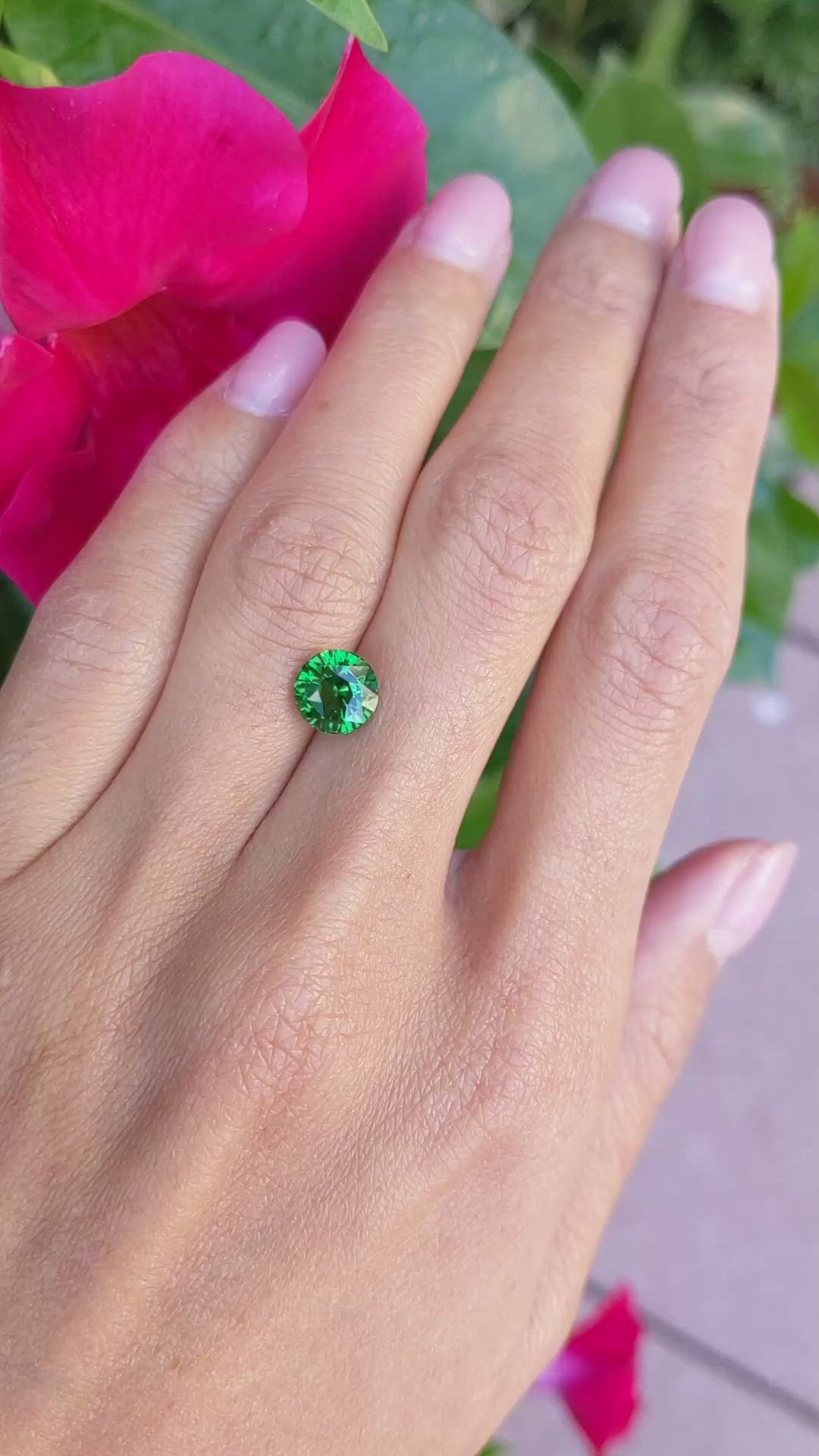

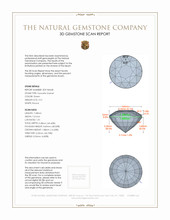
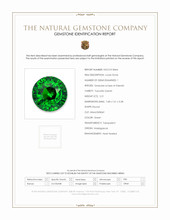
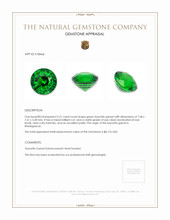
2.21 Ct. Tsavorite Garnet from Madagascar
Item ID: | K18464 |
|---|---|
Dimensions (MM): help | Length: 7.68 Width: 7.61 Height: 5.28 |
Weight: | 2.21 Ct. |
Color: help | Green |
Color intensity: help | Vivid |
Clarity: help | Eye Clean |
Shape: help | Round |
Cut: | Mixed Brilliant |
Cutting style: | Faceted |
Enhancements: help | Heat Treated |
Origin: help | Madagascar |
Per carat price: help | $3,700 |
Imagine slipping a jewel the color of a secret garden onto your hand, a stone that seems to hold summer evenings and early morning dew in its heart, a gemstone that promises to become part of your most cherished memories. This remarkable transparent 2.21 carat round green tsavorite garnet from Madagascar measures 7.68 x 7.61 x 5.28 mm, and its mixed brilliant cut has been executed to exquisite precision. At eye level it is eye clean and every facet is polished to an excellent finish, allowing a vivid color intensity to sing with each movement. Heat treatment has been applied with the greatest respect for the stone, enhancing its natural vibrancy while preserving the purity and integrity that make this tsavorite a treasure. At The Natural Gemstone Company we have handled thousands of gems, and this piece stands out for its clarity, its luminous green, and the way light seems to ripple through it like joy.
When you compare the hue and tone of this Madagascar tsavorite to tsavorites from more familiar locations such as Kenya and Tanzania, you will notice beautiful distinctions that elevate its personality. Kenyan and Tanzanian tsavorites are celebrated for their vivid grass green and deep saturation, often leaning toward a pure, slightly yellow green that glows from within, and while those stones can be intense and magnetic, this Madagascar gem carries a slightly fresher, more verdant tone that reads as a crystalline emerald green with a light lively edge. Against Colombian emeralds the difference is poetic, emeralds from Colombia tend to wear a luxurious, verdant depth with a bluish undertone and often an old world richness that speaks to centuries of lore. This tsavorite, in contrast, beams with a cleaner, brighter green, less brooding and more exhilarating, a green that feels like laughter rather than solemn promise. Compared to Zambian emeralds which often show a cooler, deeper bluish green, this Madagascar tsavorite keeps the tone warmer and more saturated, more like sunlight filtering through leaves. Against Russian demantoid garnets, which offer a yellowish green sparkle with exceptional dispersion and fiery flashes, our tsavorite presents a crisper, more pure green without the olive cast, favoring a brilliant, verdant clarity rather than a golden shimmer. And when set beside electric Paraiba tourmalines, known for their neon blue green that seems almost unreal, this tsavorite remains grounded in nature, offering a vivid, wearable green that sings of life rather than electricity.
The mixed brilliant cut on this round tsavorite multiplies its personality, producing scintillation and depth that draw the eye into a lush inner world of color, every facet acting like a tiny window that shows another shade of green. Its proportions at 7.68 by 7.61 by 5.28 millimeters are ideal for translating carat weight into presence, the stone wearing larger than its weight would suggest because of the exceptional brilliance and the way the pavilion interacts with light. The eye clean clarity is a rare gift, allowing the color to stand unencumbered, the vivid intensity appearing as a pure statement without internal distractions, while the excellent polish ensures that light glides across the surface like music. Heat treatment has been used to refine the hue, a careful process that we disclose openly, and the result is a stable, vivid green that will endure and delight. Imagine this tsavorite mounted in a minimalist bezel to let its color overwhelm, or set in a halo to heighten its presence, the mixed brilliant cut offering flashes that make every handshake, every hug, every glance a memory that sparkles. At The Natural Gemstone Company we can help you envision the exact setting that will transform this gem into an heirloom, a testament to a moment of joy or commitment.
Owning this Madagascar tsavorite is like claiming a small piece of a lush island dream, a green that speaks of rare places and the emotions they evoke, a stone that is both intimate and showstopping. It is the kind of gem that turns a gift into a story, an anniversary into a living memory, a proposal into an unforgettable yes. The provenance from Madagascar adds an element of distinction, because while Kenya and Tanzania are celebrated sources for tsavorite, Madagascar produces examples that can surprise and delight with clarity and a fresher tonal quality. When you choose this tsavorite from The Natural Gemstone Company you are choosing a gem evaluated for transparency, clarity, cut, and color, a piece that carries our commitment to honest, passionate gemstone selection. Let this green garnet be the color in your life that marks a new chapter, a daily joy, a generous surprise, or a treasured family keepsake. If you would like help visualizing a setting or understanding how this gem will behave under different lighting, we are delighted to assist, because the true beauty of a gem is not only in its appearance, but in the moments and memories it becomes.




